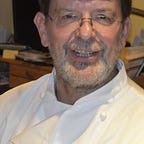When the Steppenwolf climbed naked
- How ideas move on
Before 1900, a movement of culture-critical minds began in Germany and Switzerland, dedicated to a vaguely formulated “life reform”. Their goal was to improve the human condition through various back-to-nature ways of thinking and acting.
It was important for them to live and exercise outdoors, to wear loose clothing, to have one’s own garden, to walk barefoot, to dance and do sports, but above all to enjoy the sun. That’s why the Central Europeans had to turn to the south and find a place there, and not an unattractive one, on Lake Maggiore (between Switzerland and Italy) — the sun-exposed hill Le Monesce, renamed the Mountain of Truth, Monte Verità.
This became a center of life-reforming thought and action with effects that continue to shape our lives even today, for example through organic food, environmentalism, naturism, yoga and naturopathy. Also the hippie movement belongs to it. Unfortunately some ideas helped initiate the blood-and-soil ideology of the Nazis.
Back then, on Monte Verità, the followers of the life reform could indulge in their desire to dance, play theater, sunbathe, hike and garden, with a maximum thrill due to the generally appreciated nudity.
Many meaning-seekers as artists, thinkers, scientists, as well as industrialists, dreamers and politicians arrived. Many came several times, many stayed for long.
Among the well-known names are Mary Wigman, Kaethe Kruse, Pyotr Kropotkin, Max Weber, Marianne Werefkin and Hermann Hesse. Hesse discovered there the original sport of nude climbing -but also gardening, which he pursued almost monomaniacally.
An interesting document shows the well-built writer — and mountaineer:
http://magazin.spiegel.de/EpubDelivery/spiegel/pdf/154008421
In 1907 Hesse and Arnold Ehret met at this place, Hesse the sensitive artist and Arnold Ehret, who had a career as a hunger artist behind him. Such a thing existed at the time and it was well received in the press, even inspiring Franz Kafka to write his short story “Der Hungerkünstler” — “A Hunger Artist”. Ehret became a diet guru because, as Kafka wrote in 1924, “In the last decades …interest in hunger artists had declined sharply“. And so he started a new career as a book author and dietician, and emigrated to the USA.
Ehretism” as a dietary theory was successful, for example measured by its most famous disciple: Steven Jobs. The latter’s apple diet is a logical application of Ehret’s ideas…..and from this came the idea for the brand name “Apple”, inspired, as it were, by Monte Veritá.
It must be mentioned that the Apple Corps Ltd. of the Beatles owes its name to a green apple painted by René Magritte, because numbers of lawsuits were carried out between Apple Inc. and Apple Corps Ltd. regarding this apple symbol.
You remember the 1984 Mcintosh PC? Its name, surprise!, reminds of the MacIntosh apple (originally from Ontario) — and notice: different notation for the letter „i“.
PS: By the way, naked climbers still exist today (but probably not inspired by the Monte Verità):
— — — — -
Bollmann, Stefan; Monte Verità, 2017, DVA Munich.
Ehret, Arnold: Mucusless-Diet Healing System, 1953 Ehret Literature, Ardsley NY.
Williams, J.A.; Turning to Nature in Germany, 2007, Stanford Univ.Press.
Ball, Hugo; Hermann Hesse, 1933, S.Fischer Berlin
Radkau Joachim; Max Weber — The Passion of Thought, 2013 Carl Hanser Verlag Munich.
https://de.wikipedia.org/wiki/Steve_Jobs
